
Contents





A Poet Who Sings Love






Danhobak-juk
Creamy Orange Treat for Winter
As a great source of nutrition, danhobak-juk increases our appetite in the cold winter and vitalizes our body and mind. Its bright orange color, sweet smell, creamy texture and savory taste is appealing to everyone. In addition, when the recipe is so simple and you only need two ingredients to make it, why don’t you give it a go?
Written by Lee Hwa-jeong Photographed by Studio Kenn
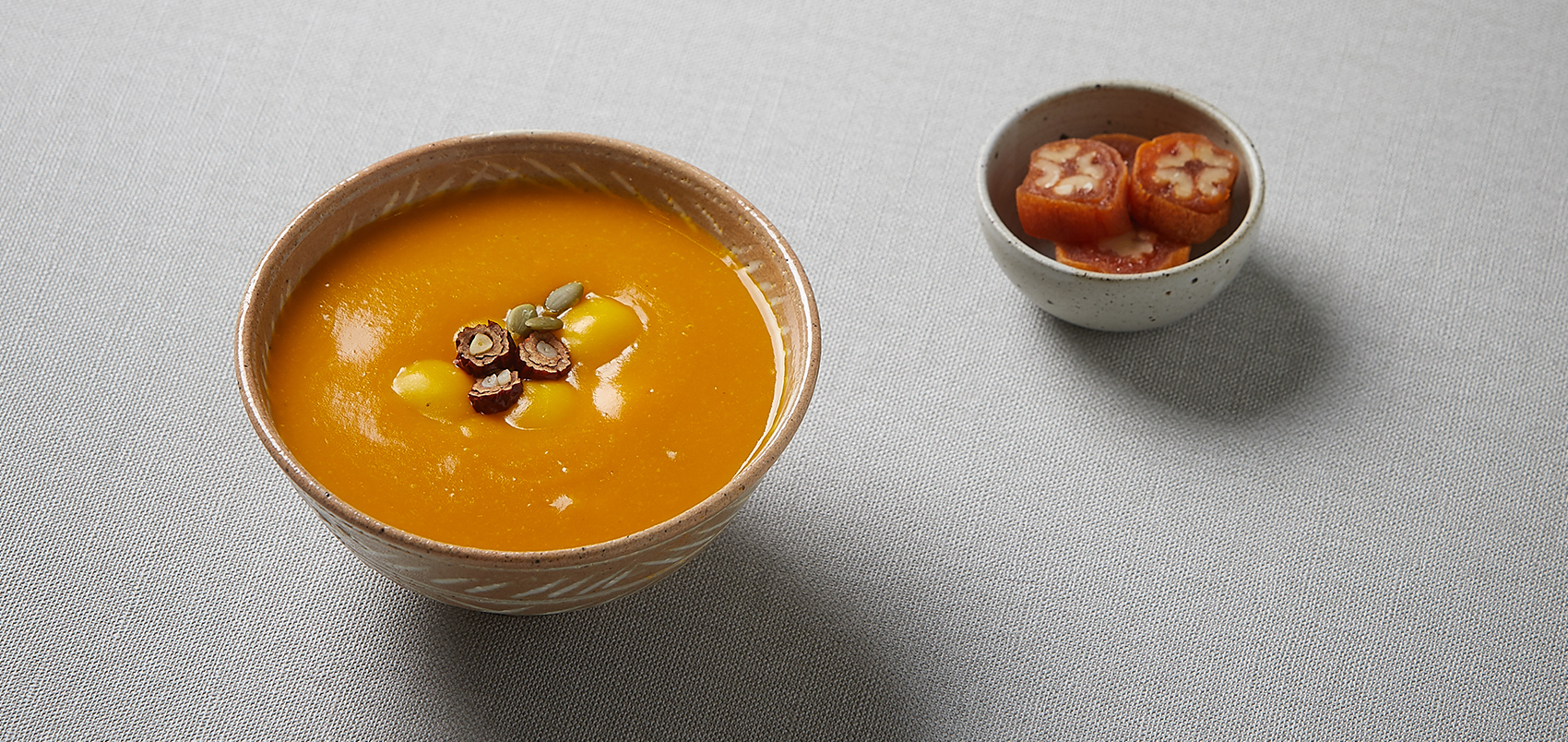
Sweet Treat, Touching All the Senses
Danhobak-juk is usually made with Korean sweet pumpkin, also known as Kent pumpkin or Kabocha squash. There is a saying in Korea that goes, “What’s good for your body is bitter to your taste,” but it is not the case with pumpkin porridge. With its minimized cooking process you can get the full health benefits of pumpkin: it’s a great source of vitamin A, C, E, potassium, beta-carotene, all of which enhances the blood flow and immune system. On top of that, fueled with dietary fiber that modern people lack in their diet, it is low in calories while still filling your stomach. Also known to reduce inflammation, danhobak-juk is usually used to help women to recover after giving birth. Its smooth texture and nutritional value makes it a perfect baby food as well. danhobak-juk is truly a food for all from little babies to grandparents. Its heavenly sweet taste is good enough to be served as dessert but its versatility is well-suited as an appetizer that immediately warms the body and mind. You only need pumpkin and rice flour to make this brilliant food, so why not try it? Make a bowl of warm porridge and serve it for your loved ones. How much you care about them will be dissolved into the food.
Ayna’s Energy as Bright as Orange Yellow
Ayna is from Uzbekistan, while boasting her perfect Korean. “I came to Korea when I was in middle school. It was tough to blend into the new culture I didn’t grow up with, but now I call it home where my life takes place.”
Ayna was proactive and absorbed instructions like a sponge—no wonder she has adopted the new culture and language so fast. Her energy as bright as orange porridge brought laughter to the kitchen all throughout the class. “As a Koryo-saram, my mom exposed me to Korean culture and heritage since I was young. I’m familiar with Korean cuisine, but I’ve never made it myself. I think my mom would love danhobak-juk.” Probably for this lovely motivation to treat her mom, she was so focused during the class. With her skillful and sophisticated hands, she almost confused everyone to think that there were two teachers in the kitchen.
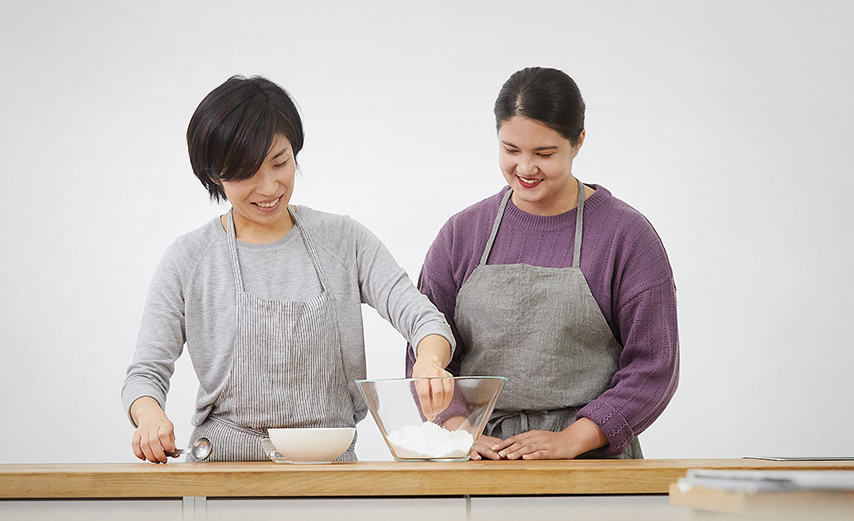 They prepare dough for sae-al, rice cake balls.
They prepare dough for sae-al, rice cake balls.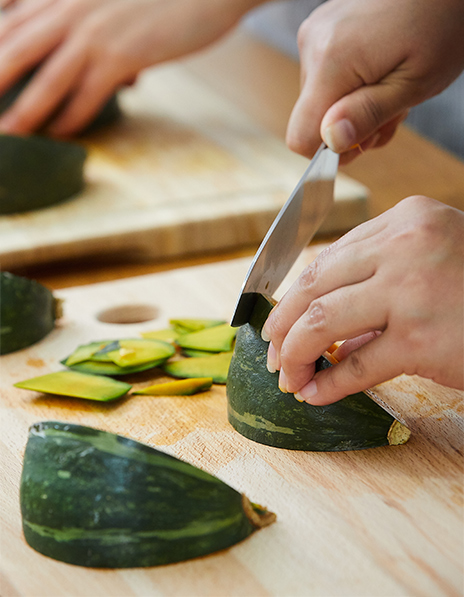 Removing pumpkin skin makes the porridge a brighter yellow.
Removing pumpkin skin makes the porridge a brighter yellow.Attention to Small Details Is the Key
It’s relatively easy to make but small details can enhance the flavor to a great degree. Don’t force yourself to cut that rock hard pumpkin open. Heating it up in a microwave for 4 to 5 minutes will soften the pumpkin and allow you to cut it more easily. When pumpkin is cut into quadrants, remove all seeds and skin with a knife and/or spoon. Steam these pieces of pumpkin until they get soft and tender. Mix these cooked pumpkin chunks with water and blend it until it gets velvety smooth. Pour this liquid pumpkin into a medium size pot. Since it’s already been cooked, it doesn’t need to stay in a pot for too long. The next step is to get the right thickness by adding rice flour. For this, mix rice flour with water in a separate bowl until they’re well mixed together. Gradually pour this mixture into the pot until the pumpkin porridge gets sticky and gluey. You should constantly stir to keep the food from going lumpy or burning.
When all this was happening on one side, we also made rice cake balls. These rice cake balls are called sae-al in Korean, meaning bird’s egg. They indeed look as cute as bird’s eggs. To make soft chewy balls, we began with combining rice flour and hot water and kneading the dough with our hands. We made a big dough ball and turned it into a long snake shape as thick as a thumb. The pieces were torn from this dough and rolled on our palms. “The little balls have to be firm so they don’t go sloppy in the porridge,” the instructor noted. We didn’t put these balls right into the porridge but instead cooked them in boiling water first. When the balls were ready, they floated to the top. We finished it by popping them into the cooked pumpkin porridge. You can adjust the number of rice cake balls to how hungry you are. You might be tempted to make more after you have had the fun little experience with sae-al. We also garnished a bowl of danhobak-juk with pumpkin seeds and dried dates. Combination of brilliant color was candy to the eyes, needless to mention its nutritional value.
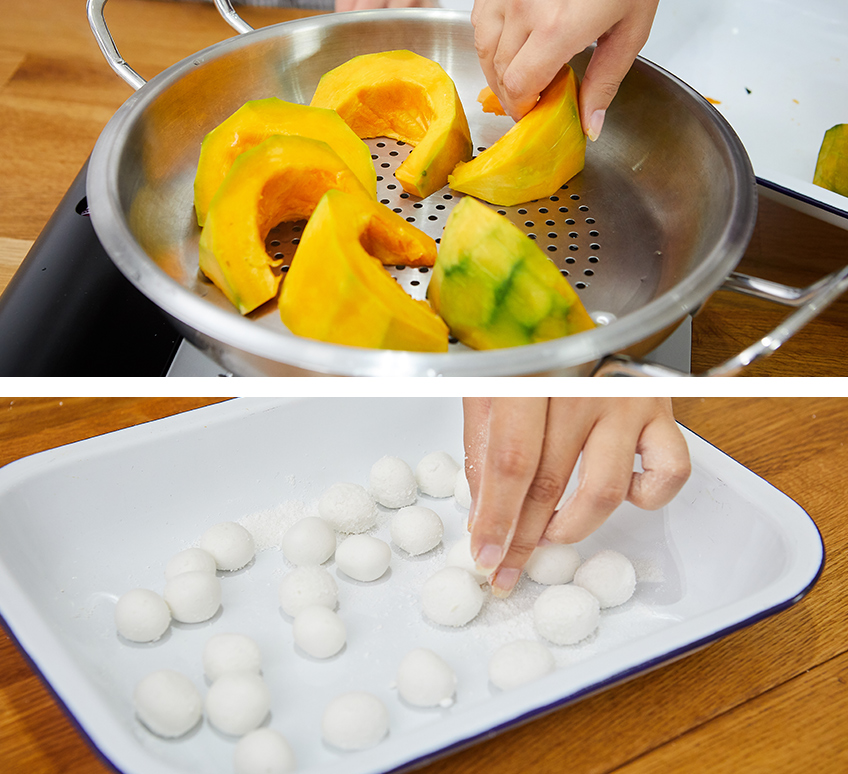 Once the chunks of pumpkin are steamed, you are more than half way to the end.(Top)
Once the chunks of pumpkin are steamed, you are more than half way to the end.(Top)Little rice balls are fun to eat with the porridge and make the food more filling.
Sweetness All the Way Home
“I like it sweet,” Ayna says as she adds honey to the pot. Just like this, you can make it sweeter to your liking using sweetener such as sugar or honey. If you can find seasonal pumpkin that is perfectly ripe and sweet, of course you wouldn’t even need anything else than pumpkin itself. The pre-made danhobak-juk at markets usually comes too sweet and it dilutes the real taste of fresh pumpkin. This is why it’s good to try your own recipe and moderately adjust sugar levels. You will find it nourishing and it will truly be nature’s treat.
“This creamy orange thing is melting in my mouth. It’s so light that I feel like I can eat endlessly.” Ayna’s hard work was paid off with the sweet and savory taste of danhobak-juk. When asked if she can try it at home, she confidently said “Yes!,” “I think it will impress my mom. I already had sweet pumpkin ready at home. I hope my mom likes it.” She hopes to expand her personal list of Korean food recipes where danhobak-juk was a great start.
Cooking Tips
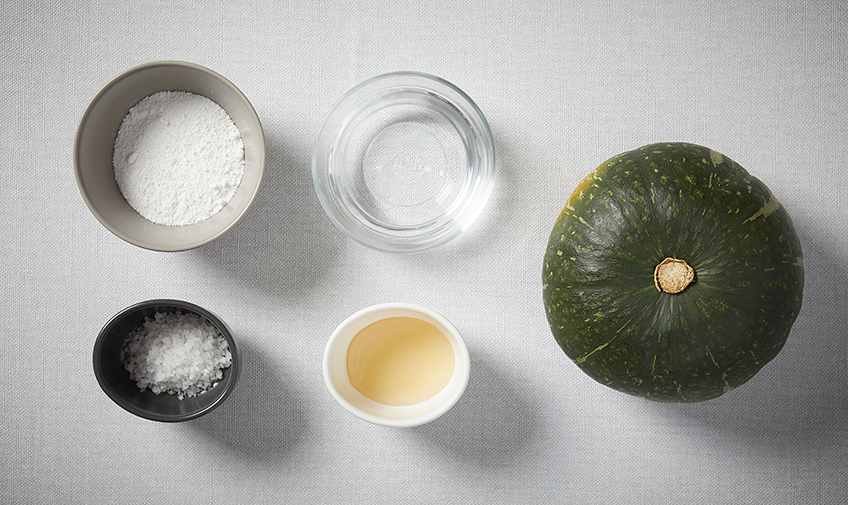
Ingredients for danhobak-juk
one medium size Korean sweet pumpkin (Kent pumpkin or Kabocha squash), 3 cups of water (for the porridge), 20 grams rice flour, 1/2 cup of hot water (to adjust thickness), a pinch of salt, honey or sugar (optional)
Ingredients for sae-al
soy sauce 3 tsp, pepper powder 1/2 tsp, grated garlic 1/2 tsp, perilla oil 1/2 tsp, chopped scallion 2 tsp, sprinkles of sesame seeds (optional)
Other Articles





A Poet Who Sings Love





Application of subscription
Sign upReaders’ Comments
GoThe event winners
Go


 December 2018
December 2018


